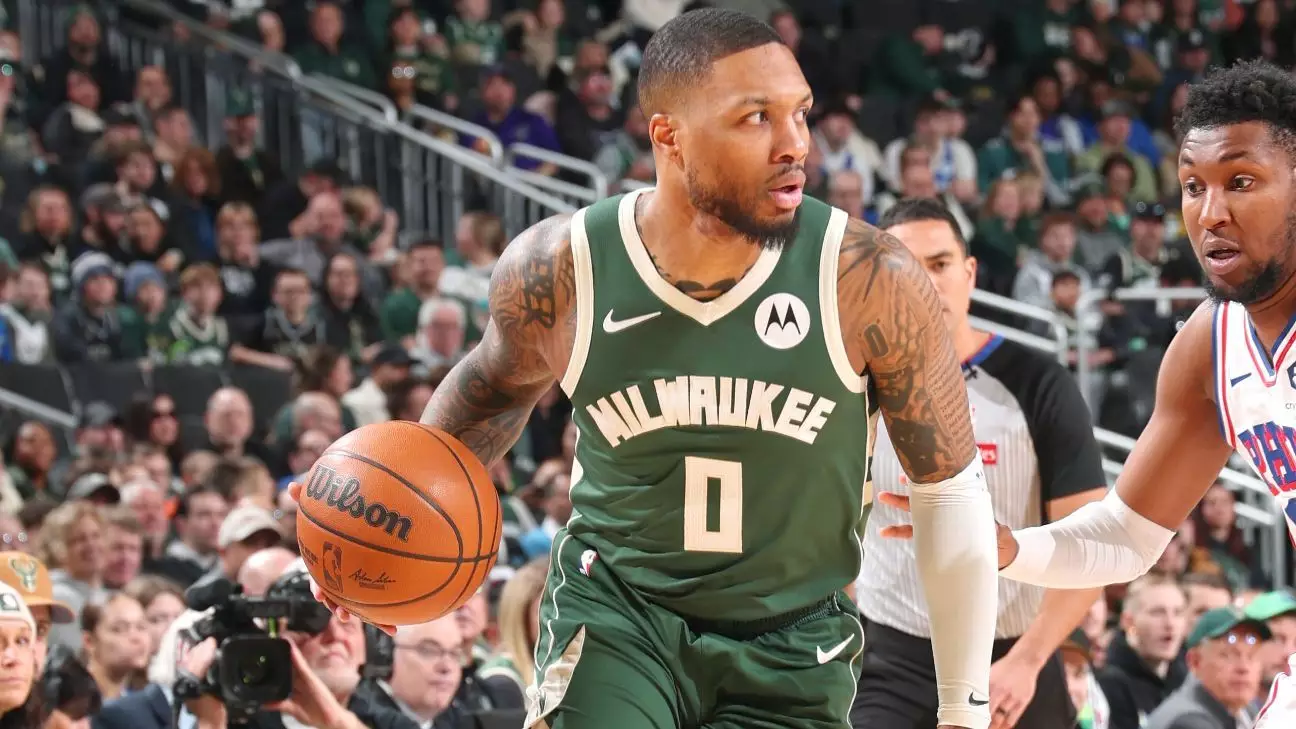In the world of professional basketball, the abrupt absence of a star player can ripple through an entire team’s dynamics. The Milwaukee Bucks are currently facing such a significant challenge as Damian Lillard, their marquee player and a seven-time All-NBA guard, is sidelined due to a concerning medical condition: deep vein thrombosis (DVT) in his right calf. This alarming diagnosis involves the formation of a blood clot, a term startling enough to make even the most seasoned athletes feel uneasy. Bucks coach Doc Rivers has openly acknowledged the gravity of this situation, emphasizing that such health concerns stretch beyond mere sports; they can pose severe threats to life itself.
When a player of Lillard’s caliber is on the bench, the entire roster must rise to the occasion, but replicating the talent and impact of a player who puts up impressive stats — like averaging 24.9 points and 7.1 assists per game — is no small feat. Rivers has already indicated that it won’t be a one-man job; rather, the responsibility will fall on multiple players who will need to step up.
The Emotional Toll
While the Bucks may be weighing their on-court strategies, the emotional weight of Lillard’s condition is perhaps more profound. Rivers poignantly expressed that while the team can adapt to the absence, the emotional support should focus squarely on Lillard rather than on the team as a whole. “Dame does not get to play,” Rivers pointed out, underscoring the psychological toll this injury takes on the player himself. With a strong understanding of human emotions involved in sports, Rivers appears committed to creating an atmosphere that prioritizes Lillard’s well-being above all else.
Sports, often viewed through the lens of victories and losses, carry deeper narratives involving teamwork, camaraderie, and psychological resilience. Rivers’ perspective sheds light on how important it is for players and coaches to maintain emotional stability during trying times, suggesting a holistic approach when handling both the athlete’s physical and mental health.
A Shifting Landscape in the Eastern Conference
As the Bucks navigate through this tumultuous period, they find themselves at a crossroads in the Eastern Conference standings. With Lillard out and two-time MVP Giannis Antetokounmpo also missing due to a sprained left foot, the absence of offensive firepower has immediately affected the team’s performance. A recent 127-117 loss has dropped them to sixth place, a position that places them a mere half-game behind the Detroit Pistons and two behind the Indiana Pacers. The significance of maintaining a top-four seed cannot be overstated, as that offers the essential home-court advantage in the playoffs.
The Bucks are now facing an adaptive challenge where they must confront their vulnerabilities without two of their star players. Rivers’ focus on collective effort indicates a deeper strategy: no longer relying solely on individual brilliance but fostering a more resilient, united front. It beckons the question — will Milwaukee’s depth prove strong enough to withstand such adversity?
Medical Insights and Recovery
The medical complexities surrounding DVT cannot be dismissed, especially in a young player’s world where rapid returns to competition are often the norm. Rivers has provided a glimpse into the extensive medical consultations the organization has pursued to best understand Lillard’s condition. The meticulous attention to Lillard’s health reflects a commitment to player safety over rushing back into a critical role. As seen in similar cases within the league — most notably with youthful prospect Victor Wembanyama — navigating DVT requires not only immediate action but also a long-term view on health and fitness.
The developments echo a central theme in today’s sports culture: the need for heightened awareness regarding athletes’ health. In an era where sports consumption doesn’t leave much room for injuries, ensuring safe play and recovery has become paramount. Teams must recognize and respect the intricate balance between athletic ambition and health. With luck and effective treatment, this moment could transform into a turning point not only for Lillard’s career but also for the organizational approach to player health.
Moving Forward: A Collective Effort
In a situation that eliminates reliance on singular talent, the idea of community becomes vital. Rivers believes in a “committee” approach to replacing Lillard’s output, signaling a shift away from star-centric solutions. This philosophy could cultivate fresh opportunities for less-prominent players to emerge as critical contributors, fundamentally shifting the team’s dynamic for the season ahead.
Ultimately, the Bucks face an uphill battle, but with a growth mindset, this crisis could render unexpected benefits that may cascade into the rest of the season, challenging the narrative of who leads and how triumphs are achieved. Whether or not the Bucks can find their way back into the top tier of the Eastern Conference remains to be seen, but the ripple effects of this period will undoubtedly shape their identity as a franchise moving forward.


Leave a Reply